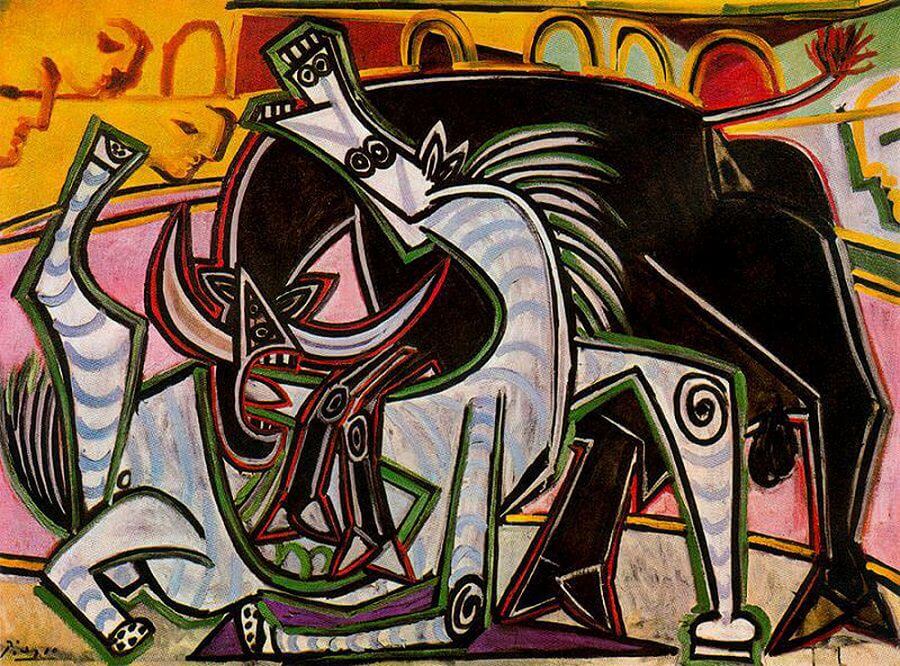
In September 1934, just after his return from Spain and fresh from the experience of the real bull fight, Picasso painted a much larger canvas depicting the bull attacking the tumbled horse, watched intently by women in the stands. More anecdotal than the elemental scenes just described, this episode in the corrida was much favoured by earlier specialists such as Francisco Goya, who was a primary reference point for Picasso's bull fight paintings. Goya's Picador Caught by the Bull, 1793 depicting the death of a picador in the bullring had been auctioned in Paris in December 1933 and it is possible Picasso had gone to look at it. But Picasso executed his painting in the least naturalistic style imaginable, as if he were literally in a frenzy.
Picasso's contemporary drawings and etchings of the bullfight are as varied as the paintings, but tend to be both more sadistic and more elaborate. Picasso was after impassioned spontaneity and the appearance of authentic, unmediated experience, and the art of the insane was an ideal model.
Bullfight, 1934 by Pablo Picasso
In September 1934, just after his return from Spain and fresh from the experience of the real bull fight, Picasso painted a much larger canvas depicting the bull attacking the tumbled horse, watched intently by women in the stands.
More anecdotal than the elemental scenes just described, this episode in the corrida was much favoured by earlier specialists such as Francisco Goya, who was a primary reference point for Picasso's bull fight
paintings. Goya's Picador Caught by the Bull, 1793 depicting the death of a picador in the bullring had been auctioned in Paris in December 1933 and it is possible
Picasso had gone to look at it. But Picasso executed his painting in the least naturalistic style imaginable, as if he were literally in a frenzy.
Picasso's contemporary drawings and etchings of the bullfight are as varied as the paintings, but tend to be both more sadistic and more elaborate. Picasso was after impassioned spontaneity and the appearance of authentic,
unmediated experience, and the art of the insane was an ideal model.

















